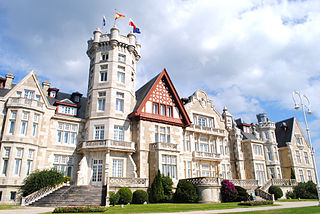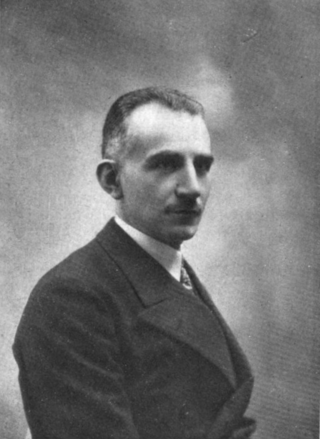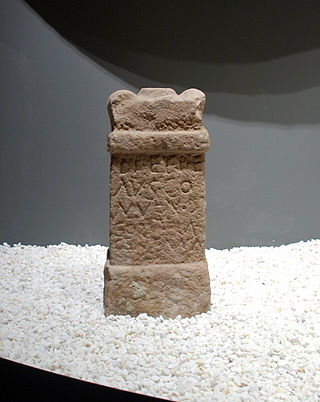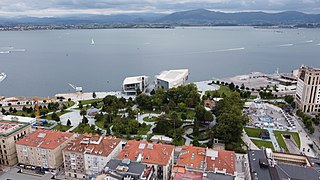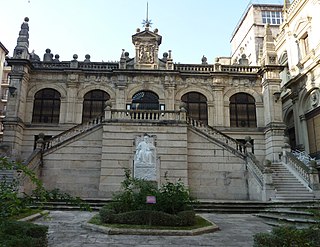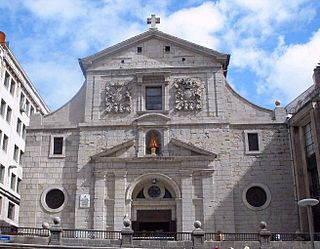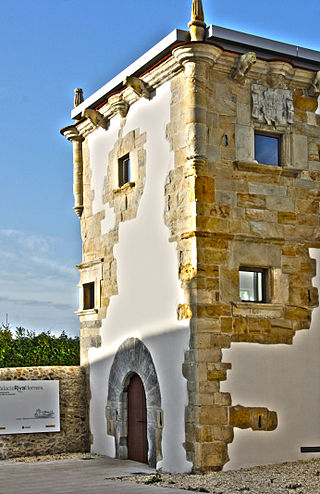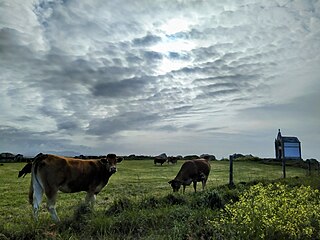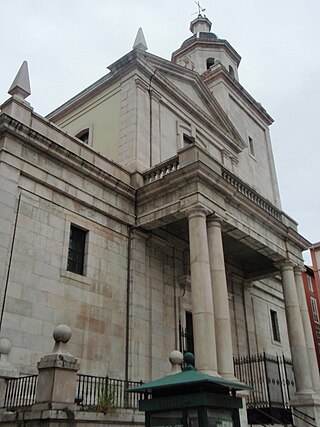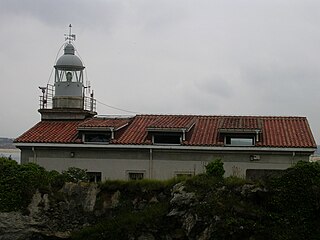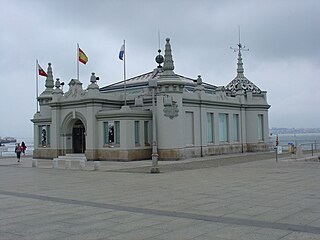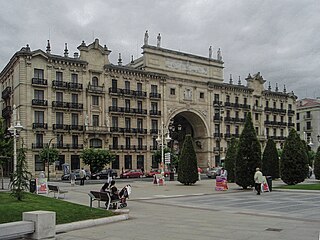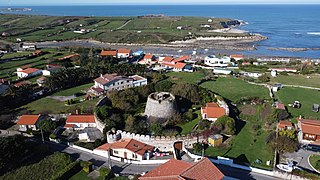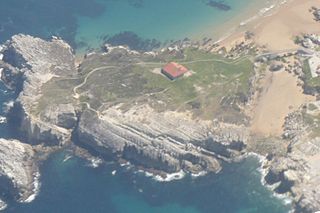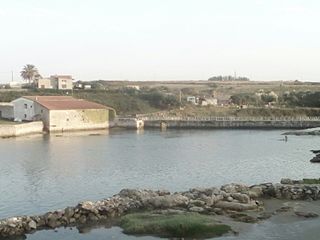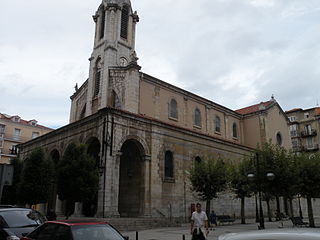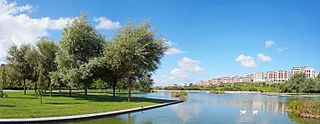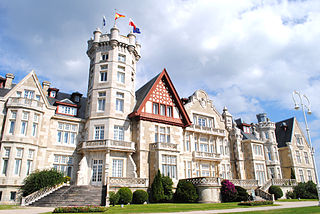19 Sights in Santander, Spain (with Map and Images)
Legend
Premium Sights
Book tickets, guided tours and activities in Santander.
Guided Free Walking Tours
Book free guided walking tours in Santander.
Welcome to your journey through the most beautiful sights in Santander, Spain! Whether you want to discover the city's historical treasures or experience its modern highlights, you'll find everything your heart desires here. Be inspired by our selection and plan your unforgettable adventure in Santander. Dive into the diversity of this fascinating city and discover everything it has to offer.
Sightseeing Tours in SantanderActivities in SantanderThe Palacio de la Magdalena is a palace in Santander (Cantabria), Spain. Its construction was financed by popular subscription and given to the Spanish royal family for use as a summer residence. It was built by architects Javier González Riancho and Gonzalo Bringas Vega between 1909 and 1911. The palace is located at the Magdalena Peninsula in the place where the old Fort of San Salvador de Hano was, which protected the entrance to the bay. Since 1932, it hosts the summer courses of the Menéndez Pelayo International University. In 1977, the City Council of Santander bought back the palace and the peninsula.
2. Monumento al Cántabro
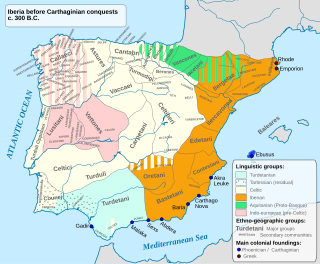
The Cantabri or Ancient Cantabrians were a pre-Roman people and large tribal federation that lived in the northern coastal region of ancient Iberia in the second half of the first millennium BC. These peoples and their territories were incorporated into the Roman Province of Hispania Tarraconensis in 19 BC, following the Cantabrian Wars.
3. Estatua del cardenal Ángel Herrera Oria
Ángel Herrera Oria was a Spanish journalist and Roman Catholic politician and later a cardinal. He established the Instituto Social León XIII to promote the social doctrine of the Roman Catholic Church and named it in honor of Pope Paul VI who elevated him to the rank of cardinal in 1965.
4. Museo de Prehistoria y Arqueología de Cantabria
The Museum of Prehistory and Archeology of Cantabria (MUPAC) is a museum specialized in prehistoric archeology and also has collections of the ancient and medieval world. It is located in the city of Santander, in Cantabria (Spain).
Wikipedia: Museo de Prehistoria y Arqueología de Cantabria (ES)
5. Jardines de José María Pereda
The Pereda Gardens is a public park in the city of Santander, in Cantabria, Spain. They are located on land reclaimed from the sea that was used as a port dock in 1805 and was officially inaugurated in 1905 coinciding with the celebration of the Arts and Industries Exhibition. It is a very busy space due to its centrality and proximity to the promenade, as well as the Botín Centre.
6. Biblioteca de Menéndez Pelayo
The Marcelino Menéndez Pelayo Library and House-Museum is located in the city of Santander, in Cantabria, Spain. The library of around 42,000 volumes belonged to the famous writer during his lifetime, passing on his death to the Santander City Council by testamentary decision.
7. Iglesia de la Anunciación
The Church of the Annunciation or of the Society of Jesus of Santander, was declared an Asset of Cultural Interest on November 11, 1992. It is the best example of Renaissance architecture in Cantabria, an architectural style that is scarcely established in the community. It is located on Juan de Herrera Street, near the Plaza Porticada and the cathedral.
8. Palacio de Riva-Herrera
The Riva-Herrera or Pronillo Palace is located in the Pronillo neighborhood of the city of Santander, Cantabria (Spain). The complex composed of the tower, the walls and the monumental complex of the noble house has been declared an Asset of Cultural Interest. The enclosure, of about 2000 square meters, has the original building, a tower from the Middle Ages called "Torre de Pronillo" to which in the sixteenth century a house with a distinguished tower, manor house, chapel, parade ground and a portal with a sundial was attached. It is the oldest civil construction in the city.
9. Panteón del Inglés
The Pantheon of El Inglés is a monument located in the Santander town of Cueto, a few meters from the coast that bathes the Cantabrian Sea, between the Devil's Bridge and the beach of El Bocal, near where the Cueto traffic light was located.
10. Iglesia de San Francisco de Asís
The church of San Francisco is a Catholic, apostolic and Roman temple, eclecticist, located in the Cantabrian city of Santander; it stands at number 9 of Calle de los Escalantes. It is the work of the Santander architect Javier González Riancho, one of the most prestigious architects in Cantabria, who designed it in the mid-twentieth century after winning the 1940 design competition, being inaugurated in 1953. It belongs to the bishopric of Santander, and is included in the lists of the artistic-religious heritage of Cantabria.
11. Faro de la Punta de la Cerda
The Punta de la Cerda beacon, also known as the Punta de la Cerda lighthouse, the Cerda lighthouse or the Argolla lighthouse because it is close to a mooring where boats with difficulties arrived, is located in the city of Santander, on the Magdalena peninsula. It receives its name because the Santa Cruz de la Cerda battery was located there, intended to protect the access to the bay of Santander from the enemies.
12. Palacete del Embarcadero
The Palacete del Embarcadero is a building in the city of Santander, in Cantabria (Spain). The Palacete del Embarcadero is located on the promenade, next to the promenade and gardens of Pereda. Designed by Javier González de Riancho, with a portico facing the sea and angular turrets, it is a building designed in 1920 and completed in 1932. It functioned as a passenger station, later used as a barracks for the Armed Police, and since it was reopened in 1985, it has served as an exhibition and conference hall. It is owned by the Port Authority, being one of the spaces enabled by the port of Santander to promote and disseminate maritime-port culture and heritage. It is dedicated to both its own exhibitions and traveling exhibitions.
13. Faro Santander
The Banco de Santander building is the headquarters of the aforementioned bank, located on Paseo Pereda in the city of the same name, in Spain, and separated from the sea by the Pereda Gardens. It is the work of the architect Javier González de Riancho. The bank's decision to keep its headquarters in this building, in the city where it was born, was maintained even after announcing the rental and sale of all its properties in 2007.
14. Castillo de Corbanera
Corbanera Castle is a military fortification built in 1874 in the area of Corbanera, La Maruca, in Monte. It was the main defensive element of the line of walls, fortifications and batteries built to protect the city from possible Carlist attacks during the Third Carlist War (1872-1876). It is a monument declared an Asset of Cultural Interest.
15. Ermita de la Virgen del Mar
The hermitage of the Virgen del Mar is a building located on the island of the Virgen del Mar, in San Román de la Llanilla, municipality of Santander. It is dedicated to the patron saint of Santander, Virgen del Mar. Its location next to the sea has meant that it has been partially demolished during storms on several occasions. Perhaps its greatest destruction was at the end of the seventeenth century.
16. Molino de Aldama
The Aldama mill was an old tidal mill used to grind cereal, of which only a part remains, which is used as a bridge over the San Pedro del Mar estuary, mouth of the Tejona stream in the neighborhood of La Maruca in Monte, Santander, capital of Cantabria (Spain).
17. Iglesia de Santa Lucía
The church of Santa Lucía is an eclectic Catholic church located in the Spanish city of Santander (Cantabria). It dates from the second half of the nineteenth century and has been declared an Asset of Cultural Interest.
18. Parque de la vaguada de Las Llamas
Las Llamas Park or Las Llamas Valley Park is an 11-hectare urban park located in the city of Santander, in the autonomous community of Cantabria (Spain). The first phase of this green space was opened to the public on 11 May 2007, with 426,000 m² still to be built, almost up to the border with La Albericia. When it is finished, it will be the park with the most trees in the city.
19. Jardines del Palacio de la Magdalena
The Royal Palace of Magdalena is a building located on the Peninsula of La Magdalena, in front of the island of Mouuro, in the city of Santander, and which was built between 1909 and 1911, by popular subscription, to house the Spanish Royal Family . The work of the architects Javier González de Riancho and Gonzalo Bringas, enclava in the place where the former fort of San Salvador de Hano was, which protected the entrance to the bay. It cost 700,000 pesetas of 1912 and was paid by the City Council and a large number of local families who played a laborious micromeceneazgo, such as the 100,000 pesetas of the company El Sardinero or the 1000 pesetas of the Botín family. The financial problems to be able to pay for the work caused the Executive Commission to even buy Christmas lottery to try their luck, without success. He was furnished in 1913, immediately becoming a summer residence of King Alfonso XIII and his family, who regularly occupied him until the proclamation of the Second Republic. In 1914 the stables were projected by González Riancho, which emulates a medieval English town with pointed roofs of pronounced slopes, wooden frames seen, etc.
Share
How likely are you to recommend us?
Disclaimer Please be aware of your surroundings and do not enter private property. We are not liable for any damages that occur during the tours.
